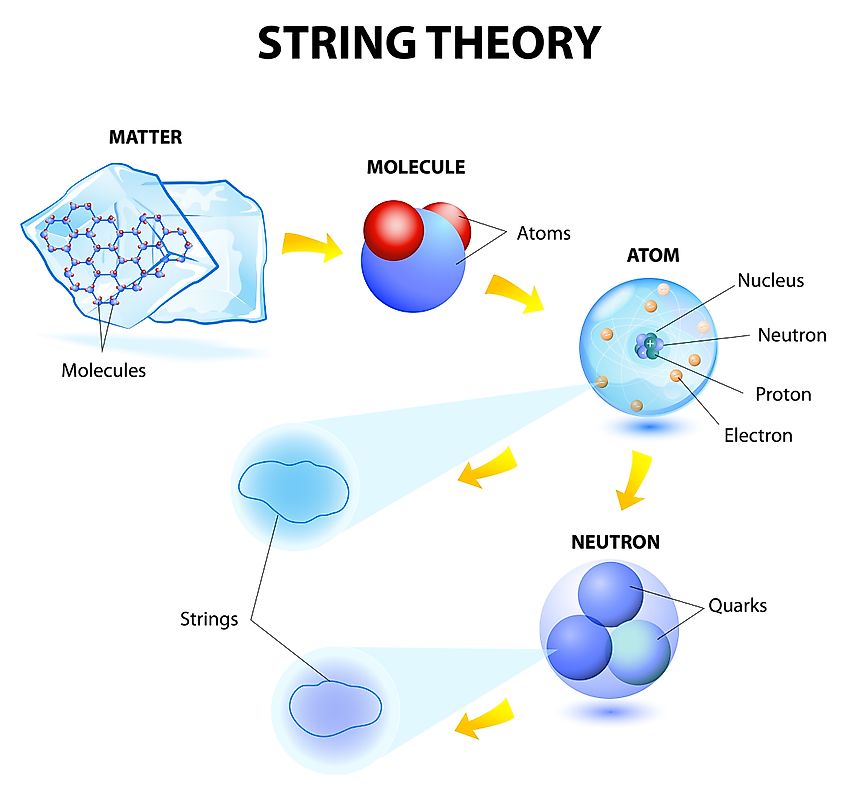
What Is String Theory?
Physics is upheld by two pillars: the physics of relativity and quantum mechanics. Relativity, which was first proposed by Albert Einstein. It explains the universe on its largest scales, such as gravity and the speed of light. Quantum mechanics is the very opposite, being the science of the smallest scales, such as atoms and subatomic particles. Together, relativity and quantum mechanics can explain the very large and the very small. However, despite both upholding all of what we know about physics, relativity and quantum mechanics don’t work well together. In fact, scientists have been unable to combine the two theories into a single, unified theory of everything.
Relativity and quantum mechanics are like a dog and a cat constantly fighting, unable to find any compromise. It may not seem overly important to combine the two pillars of physics into one. After all, separately, relativity and quantum mechanics can explain most of the universe. However, having two separate laws that govern the universe has its problems.
For example, imagine there were two types of streets, and the type defines the rules of driving. Some streets have either one type or the other, so the rules are pretty simple. However, other streets fit the definition of both types, so which driving rules apply to them? Like having two completely different rules of the road, the inability to combine quantum mechanics and relativity creates chaos when trying to understand our universe. Interestingly, there are some potential theories out there that combine the two pillars of physics, the most famous of which is string theory.
The World According To String Theory

According to string theory, if you were to look inside any fundamental particle, such as an electron, you would find a tiny vibrating string of energy. When the string vibrates, the energy it generates creates a particle such as an electron. In string theory, fundamental particles can be thought of as energy vibrations. Furthermore, string theory predicts the existence of eleven dimensions. The reason we don’t see these dimensions in our everyday lives is because they’re simply too small to detect. However, the extra dimensions play a vital role. The configuration of the dimensions determines how a string vibrates, and hence what particle is made. The strings vibrate in eleven dimensions, and the frequency at which the string vibrates is dependent upon how the string is oriented within the eleven dimensions. Different frequencies of vibrations generate different particles.
The reason why string theory is a potential theory of everything is because it predicts that all forms of matter are made up of strings, and thus everything is really made up of the same stuff. Whether it’s the gravitational force or the electromagnetic force, all of it relates back to vibrating strings. It should be noted, however, that no evidence has been found to support string theory. None of its predictions have been verified through either experiment or observation. As of yet, it’s more of a mathematical theory rather than one of physics.











